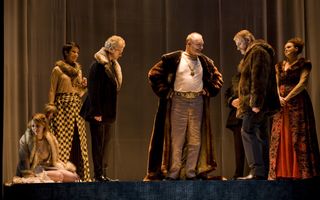
In this task, students consider the tragic ending of Shakespeare’s King Lear, and employ their critical thinking skills to make their own decision about what the ending reveals. Students are invited to consider what is gained or lost by a tragic ending, and to craft their own ending to the play.
The earliest version of the story of King Lear was written in 1135 and appeared in Geoffrey Monmouth’s History of the Kings of Britain. This story, and the many adaptations that followed it (including an anonymous play called The True Chronicle History of King Leir and His Three Daughters, Gonorill, Ragan and Cordella, written around 1594), all have happy endings. Shakespeare’s play was the first version to have a tragic ending.
In 1681, Nahum Tate rewrote Shakespeare’s King Lear to have a happy ending. This revised version was performed throughout the 17th and 18th centuries, and it wasn’t until the 19th century that performers reverted to Shakespeare’s original text.
- Do some research on one of the other versions of the story of King Lear. See if you can find a record of this version, or a summary of its plot.
- Write a paragraph defending either the happy or tragic ending of King Lear. What do you think is gained or lost by a happy ending? Which version do you find more compelling?
- In contemporary language, write your own version of the final scene of the play. This version may take the form of a play script, a narrative, a graphic novel, a storyboard, etc. What would you retain or change?
- Write a paragraph defending your version of the ending. Why do you think it works? What do we learn from it?




